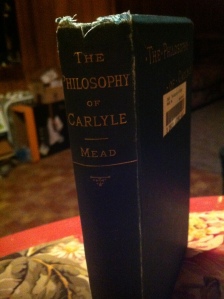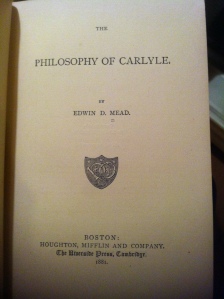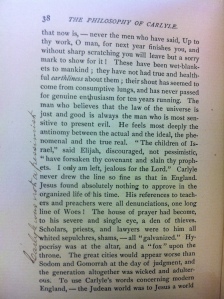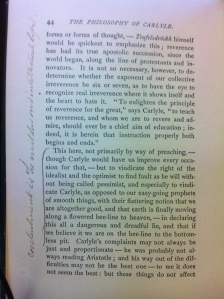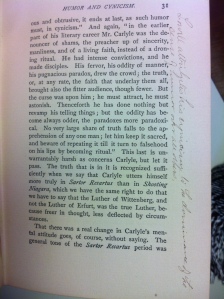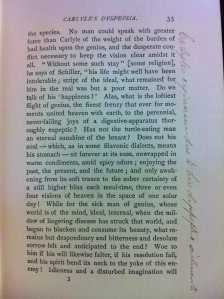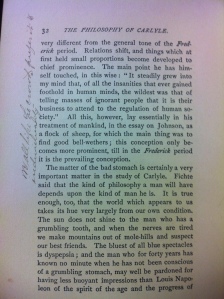It is not often that a class entails students to perform detective work in the library. However, after the four years I have spent in undergraduate college, I am beginning to realize that much of undergrad level research, is actually disguised detective work. This time, our class had many of treasure trove-ing in the Sojourner Truth Library at New Paltz in 19th and early 20th century literature to capture and document the unique marginalia found in the supposedly “self-destructive” physical texts of this time period. My expedition in the deep level of the library brought be to this old but plain and unassuming book titled, The Philosophy of Carlyle, written by Edwin D. Mead and published in Boston by Houghton, Mifflin and Company of The Riverside Press, Cambridge, in 1881.
Now, before we delve into the fascinating bits of things that were handwritten by people a century ago, you might be asking the same question I did while I was gingerly inching this old and worm book out of the shelves, who is Carlyle?
A quick search on the world’s favorite search engine returns a reoccurring name, Thomas Carlyle, a renown Victorian Philosopher during the time. Carlyle was known to be a well-verse intellectual as a “Scottish historian, critic, and sociological writer” and mostly, a satirical writer. His ideas and rhetoric had brash but unique and passionate quality when it came to his philosophy on the rising phenomenons of his time, mainly being the rise of science. However, according to victorianweb.org, he was not specifically adherent to one body of established philosophy in much of his writing. Leaving his readership to parse out and further analyze the man’s “impossible to imitate” thought process and philosophy. In The Philosophy of Carlyle, author Edwin D. Mead did just that.
Now on to the good stuff! (click on the link for a crude transcription of what it says!)
Wait, that’s it?
Well for starters, if your eyes can compensate for the low-quality iphone pixelation, the cursive that boarders the text actually resembles a late 19th Palmers style script that was standard for the educated and literature of the time. To contrast with another type of script that was also common for the century, Spencerian script, Palmers did not contain the same fluctuation in line thickness as Spencerian did. It is also known that Palmers became the standard script of the United States in the late 19th century.

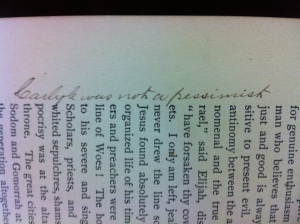
It could be assumed that this marginalia belonged to a student or an intellectual who lived in the United States, as this book was published and printed in the U.S and by the style of the script. What the person wrote however, does not seem to go beyond typical notation that is similar to that of a student jotting key points down in the margins. The person responsible for the marginalia is also largely unknown, due to these few sentences that give no traceable information back to his or herself. While I made a somewhat lackluster discovery in this faded, green, six-inch book about a 19th century philosopher, I believe I could very well find myself acquainting myself with that old but charming book with a disintegrating spine the next time I need to go to the library.
